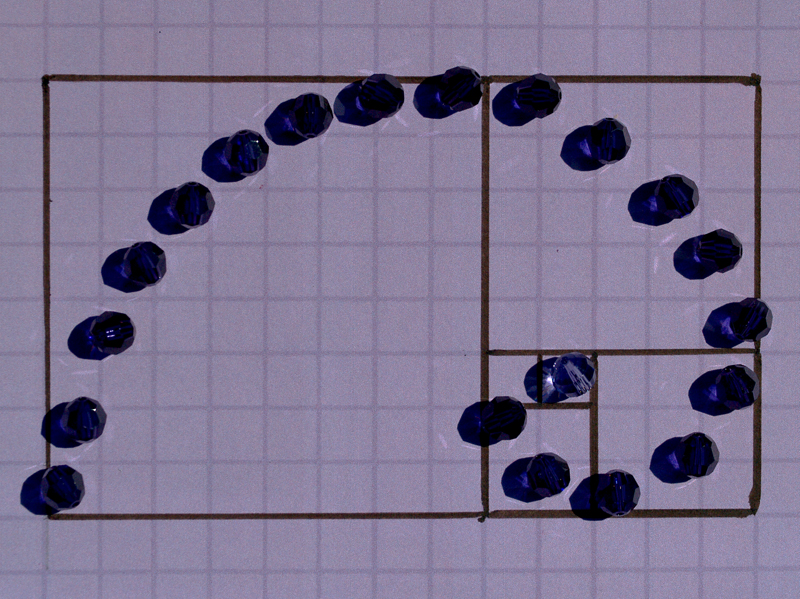Principle
The Call: Fibonacci and Swarovski — Cheryl
In her book, Open Your Eyes: 1,000 Simple ways to Bring Beauty into Your Home and Life Each Day, Alexandra Stoddard writes:
Standards for aesthetically pleasing proportions are scientifically logical, achieved by following mathematical rules that date back to the civilization and architecture of ancient Greece. Though the Greek masters of architecture originally resolved proportions visually, they eventually gave architecture total stability through applying precise, unchanging mathematical formulas. When the classical principles of the Greeks are employed, harmony and excellence result.
Those classical principles did not end with the Greeks, however. In 1202, Leonardo of Pisa, known as Fibonacci, introduced to Europe a numerical concept originally found in Indian mathematics. This became know as the Fibonacci Sequence, which is: 0, 1, 1, 3, 5, 8, 13, 21, … From that sequence, a series of squares can be drawn that fit into a rectangle. For instance, if the unit of measure is inches, you would draw two 1-inch squares side-by-side, and hold them up with a two-inch square beneath. Next to that you would draw a 3-inch square. A 5-inch square fits directly above the 3-inch and two 1-inch squares, and next to all of that is drawn an 8-inch square. When a spiral is drawn through all of these squares (from one corner to its diagonal opposite) in one continuous line, you get a golden spiral: one of those perfect shapes that embody the principles of harmony and beautiful composition.

The Response: Danny in His Crib — Jessica
To be honest, I thought this would be an easy prompt. And then it just seemed that no matter what I did, the picture didn’t work and the words didn’t come.
Now that I’ve run out of time, the best I can do is a picture of Danny, my youngest, and a quote from Mother Teresa. It is a principle that I try to live by.
Love begins by taking care of the closest ones — the ones at home.





Awesome post! One of my most memorable pictures was of a tree with the fibonacci spiral in the trunk. I was so excited to have noticed it on a walk through the forest with the kids. I like your crystal one. : )
I’m so impressed that you noticed a golden spiral out in nature. When I was contemplating my shot, I couldn’t imagine finding one out in the real world, so I manufactured my own.
Danny is adorable, and he looks very enthralled by his butterfly toy. I like the principle you try to live by, and I’d have to say that it’s one I’ve tried to live by. Saving the world is probably impossible for me, but I can give my kids and husband my best.